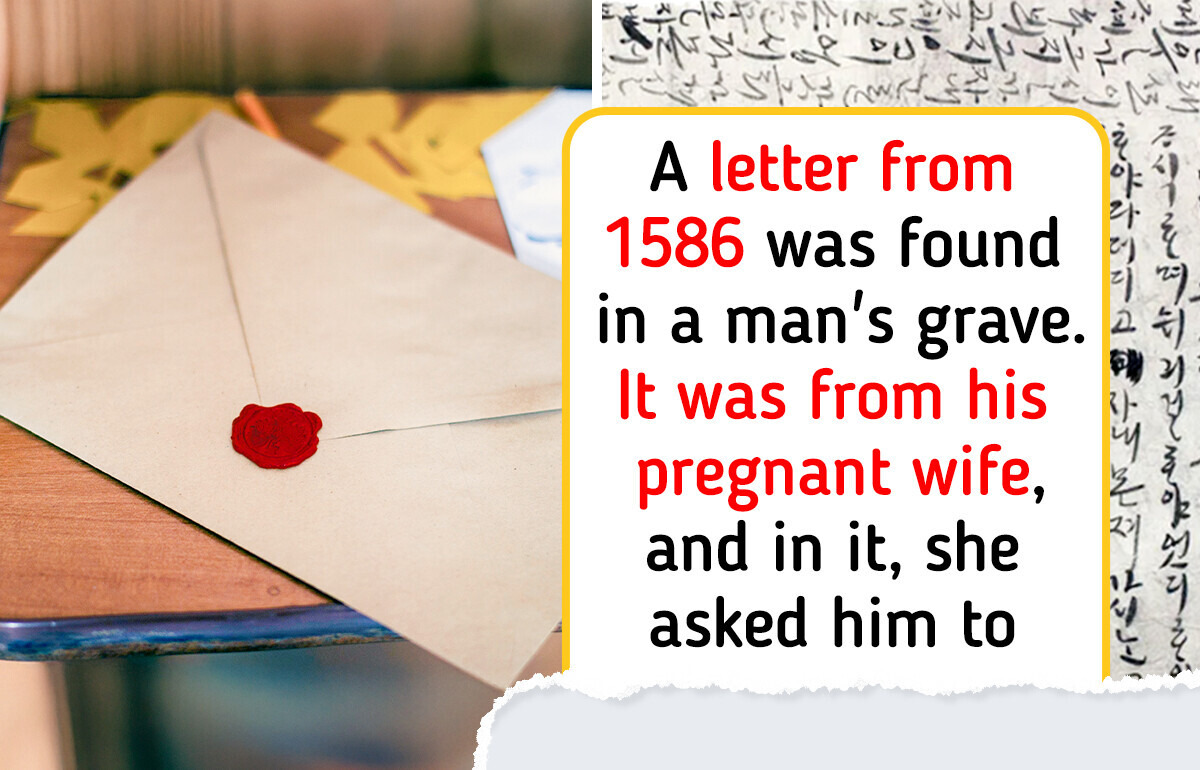14 Work Stories So Wild They Could Be a Netflix Series


Archaeologists are like the detectives of history. Through their research into the past, they help us understand how people lived hundreds of years ago in different parts of the world. Thus, they have become an important part of history thanks to their archaeological discoveries, some of which are worth mentioning because they show that our ancestors’ lives were not so different from ours.
In Pompeii, in the House of the Vettii, the remains of a Roman kitchen and its utensils are preserved. This space, known as the “culina”, was usually small and dark, and was located in a remote part of the house to evacuate the smoke. For cooking, they used pots on a masonry hearth, similar to modern-day devices, suggesting that their way of cooking was not very different from today.
A letter from 1586 was found with a lock of hair in a man’s grave in South Korea. It was from his pregnant wife, who was seeking to communicate with him after his departure. In it, she asked him to appear in her dreams to see him again. This story has been the inspiration for novels, plays, and films today.
This penannular (meaning incomplete ring-shaped) brooch with beast-shaped terminals is part of the St Ninian’s Island Treasure. It dates from the late 8th century and was discovered in the late 1950s on one of the Shetland Islands in northern Scotland.
Now in the National Museum of Scotland, it shows that such decorative objects were in everyday use in times when buttons or pins were not very common. Today, they can be seen on famous fictional characters from Viking and medieval times, as well as on Celtic warriors and historical and mythological fantasy.
Contrary to popular belief, the Vikings took personal hygiene and presentation very seriously, and this object proves it. It is a comb made of antlers and is part of the exhibition We call them Vikings, produced by the Swedish History Museum. With it, we can see that more than a thousand years ago, appearance was already a daily concern.
Hayakawa Shōkosai III was a renowned Japanese master craftsman who introduced the use of natural bamboo to traditional basketry. One of his creations is this fly whisk, which, in addition to being useful for scaring away flies, symbolizes the sweeping away of mental distractions and ignorance during the practice of sencha, the Japanese tea ceremony. Today, it is part of the Japanese art collection of the Metropolitan Museum of Art in New York City.
This chest-shaped vessel, known as a ’mastos’, is made of pottery and decorated with equal concentric moldings, alternately painted white, red, and black. It was made by the Athenian potter Sotades, and dates from about 460-450 BC. It was discovered in Athens, and is now in the British Museum, showing that food and drink vessels were also commonly used objects dating back thousands of years.
Masks have been used throughout human history for a variety of purposes. This one belongs to the Edo period, which extended in Japan from the 17th to the 19th centuries. It was carved in wood and has a painted detail in the eyes and mouth, as well as an extensive nose. It is similar to the masks used today in theater and even in famous Hollywood films.
These trouser fragments have been radiocarbon dated to between the 13th and 10th century BC. They were found in Turfan in eastern Central Asia. According to research, the tailoring process did not involve cutting the cloth, but rather the pieces were molded on the loom and shaped to fit a specific person. They are made of three pieces of cloth woven independently and are apparently a predecessor of modern jeans.
This toy was found at an archaeological site near the present-day town of Kostolac in Serbia and dates from the 2nd century AD. It is made of painted terracotta, has four wheels and is now part of the collection of the Museum of Požarevac. Its shape is very similar to modern toys, which also have wheels for children to play with.
This clay censer corresponds to a ’thymiaterion’, a type of censer used in rituals to burn aromatic substances such as incense. It was discovered at Gra Lygia, near Ierapetra in Greece, and dates to 1400-1200 BC. It is now housed in the Archaeological Museum of Agios Nikolaos in Crete, Greece, and is an object whose purpose is still relevant today.
These objects represent the different eras of humanity, its daily life, and some customs that remain to this day.











